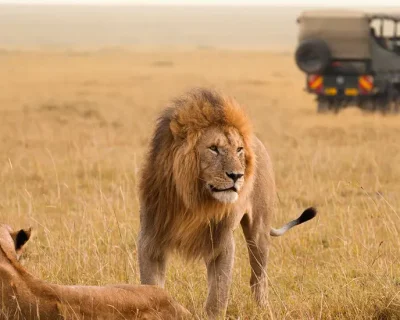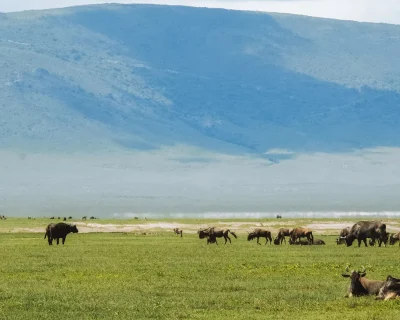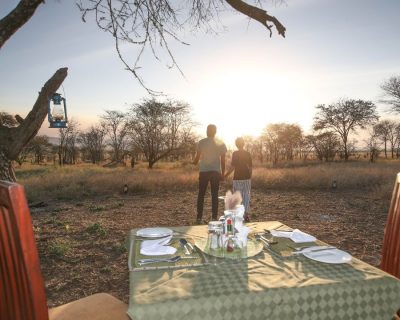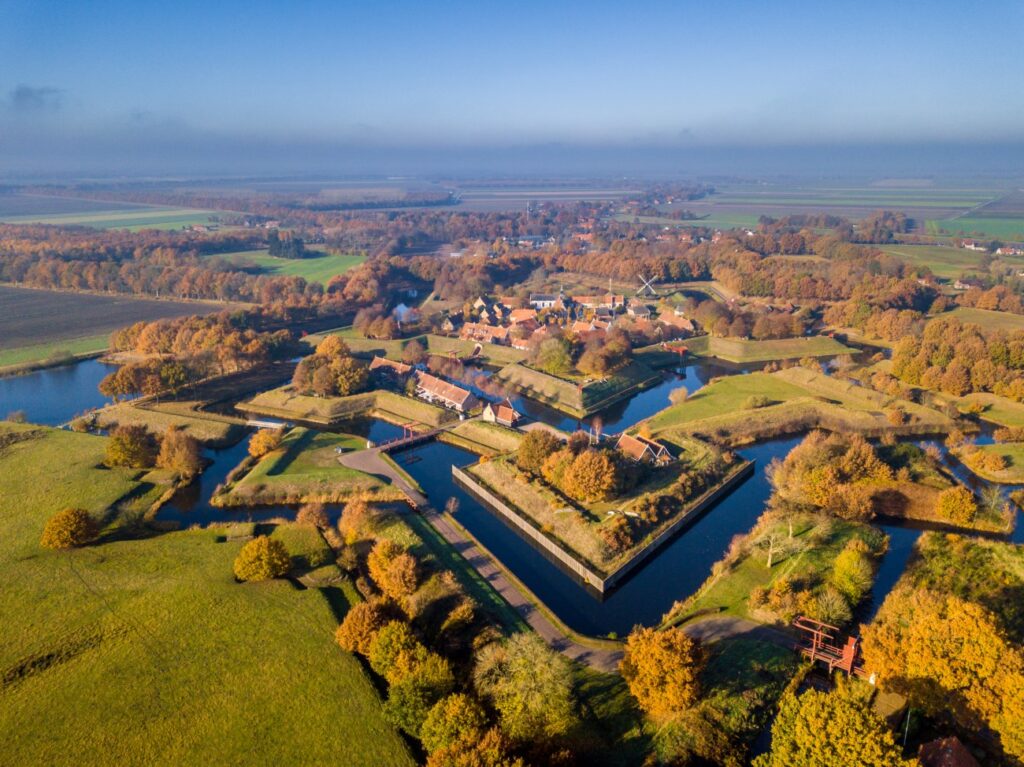If you want to truly witness the Great Migration in Tanzania, your accommodation can’t stay in one place. Here’s how mobile migration camps keep you where the action is—and why it makes all the difference.
What Makes the Great Migration So Complex (and So Spectacular)
- The migration is not a single event—it’s a year-round movement
- Animals move based on rainfall and grazing, not fixed schedules
- Seeing it requires being in the right place at the right time
The Great Migration isn’t just about wildebeest crossing rivers. It’s a continuous loop of over 1.5 million wildebeest, zebras, and gazelles moving through the Serengeti–Mara ecosystem in response to rainfall. From calving season in the Ndutu plains (January to March) to dramatic river crossings in Kogatende (July to October), every stage offers different wildlife behaviors.
Because the herds follow fresh grass, their movements vary slightly every year. A lodge that was perfect in August this year might be hours away from the action next year. That’s why timing and location are everything.
What Is a Migration Safari—and Why It’s Not Like a Typical Safari
- Wildlife is constantly moving, unlike in resident-wildlife parks
- A standard lodge stay could leave you far from the herds
- Migration safaris follow nature’s timeline—not a static itinerary
In places like Ngorongoro Crater or Tarangire, wildlife tends to stay in predictable areas year-round. But in the Serengeti, particularly during migration season, animals move in response to rainfall and grazing. Staying in one fixed location might mean spending hours driving to where the herds were yesterday.
Migration safaris are different because they follow the herds. You don’t rely on luck—you rely on mobility. When your accommodation moves with the wildlife, you maximize your chances of witnessing key events like calving or crossings without needing to chase them.
Why You Can’t DIY a Migration Safari
- The migration’s location shifts yearly, based on rain and grass
- Experienced local operators track herd movement in real time
- DIY planning risks poor placement, missed sightings, and lost time
There’s no way to “wing it” with the Great Migration. Online maps and general travel forums won’t tell you where the herds are next week. You need on-the-ground knowledge and access to park movement data to stay in the right place. Local tour operators and mobile camps track the herds closely, adjusting routes and repositioning camps when needed.
Trying to do it yourself could mean arriving at the wrong time, booking the wrong lodge, or missing internal flights to remote airstrips like Kogatende. Migration safaris involve tight coordination between flights, permits, camps, and guides—planning it alone can easily backfire.
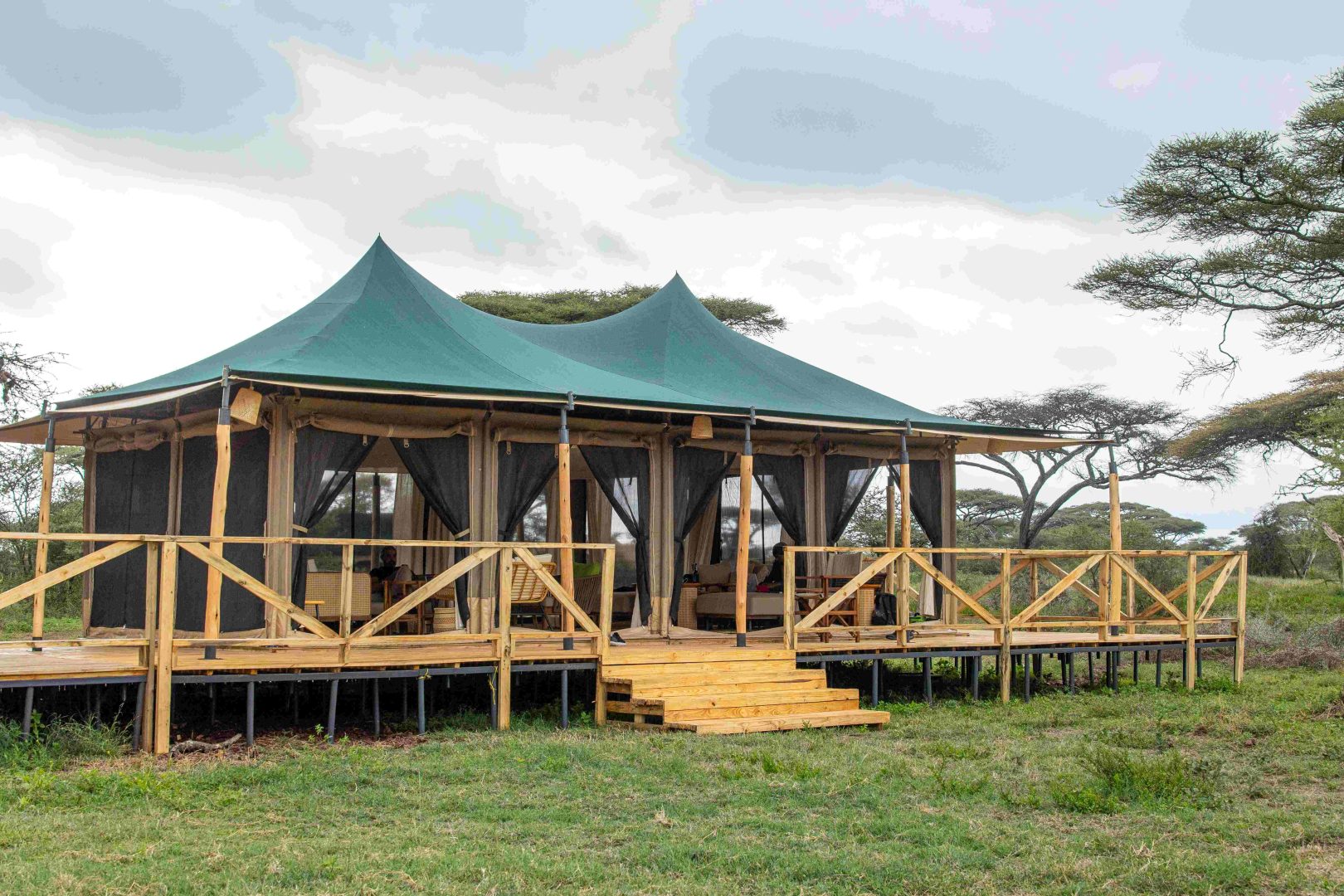
What Are Mobile Migration Camps?
- Mobile camps relocate 2–3 times per year to follow the herds
- Fully serviced with real beds, bathrooms, meals, and guides
- Designed for comfort, immersion, and remote access
Mobile migration camps are tented accommodations designed to move as the herds move. They don’t just drop you in a general region—they position you precisely where wildlife action is expected. From June to October, camps like Olturoto and Enkutoto Migration Camp are based in Kogatende, near the Mara River. From November to March, Enkutoto shifts south to the Ndutu region for calving.
Despite being mobile, these camps offer exceptional comfort: real beds, hot bucket or plumbed showers, gourmet meals, solar-powered lighting, and private verandas. The experience is designed to blend wilderness intimacy with modern comfort—without the need to “rough it.”
Why Location and Timing Are Everything
- The Serengeti is huge—wildlife density shifts week to week
- A lodge 50 km away could be hours from the herds
- Mobile camps are placed where the action is—on purpose
The Serengeti spans over 30,000 square kilometers. Choosing a camp in the wrong area, even by a short distance, can mean long daily drives and empty plains. River crossings only happen at specific spots. Calving occurs in precise areas of the southern plains.
Mobile camps solve this problem by relocating seasonally. You sleep near the action—not hours away. You’re there when the first wildebeest inch toward the riverbank or when predators stalk newborn calves. You’re not chasing—you’re present.
Why You Must Plan in Advance
- Mobile camps are small (10–20 tents) and fill fast
- Peak seasons (July–Oct, Jan–Mar) are booked months ahead
- Internal flights and permits have limited availability
Many first-timers underestimate how popular migration seasons are. There are only a few airstrips serving regions like Ndutu or Kogatende, and only a few dozen high-quality mobile tents available at any given time. This means last-minute bookings often miss the migration completely—or end up far from it.
If you want to stay where the action is, plan 6 to 9 months in advance. This ensures the right camp, the right guide, and the right flight connections are in place before demand locks you out.
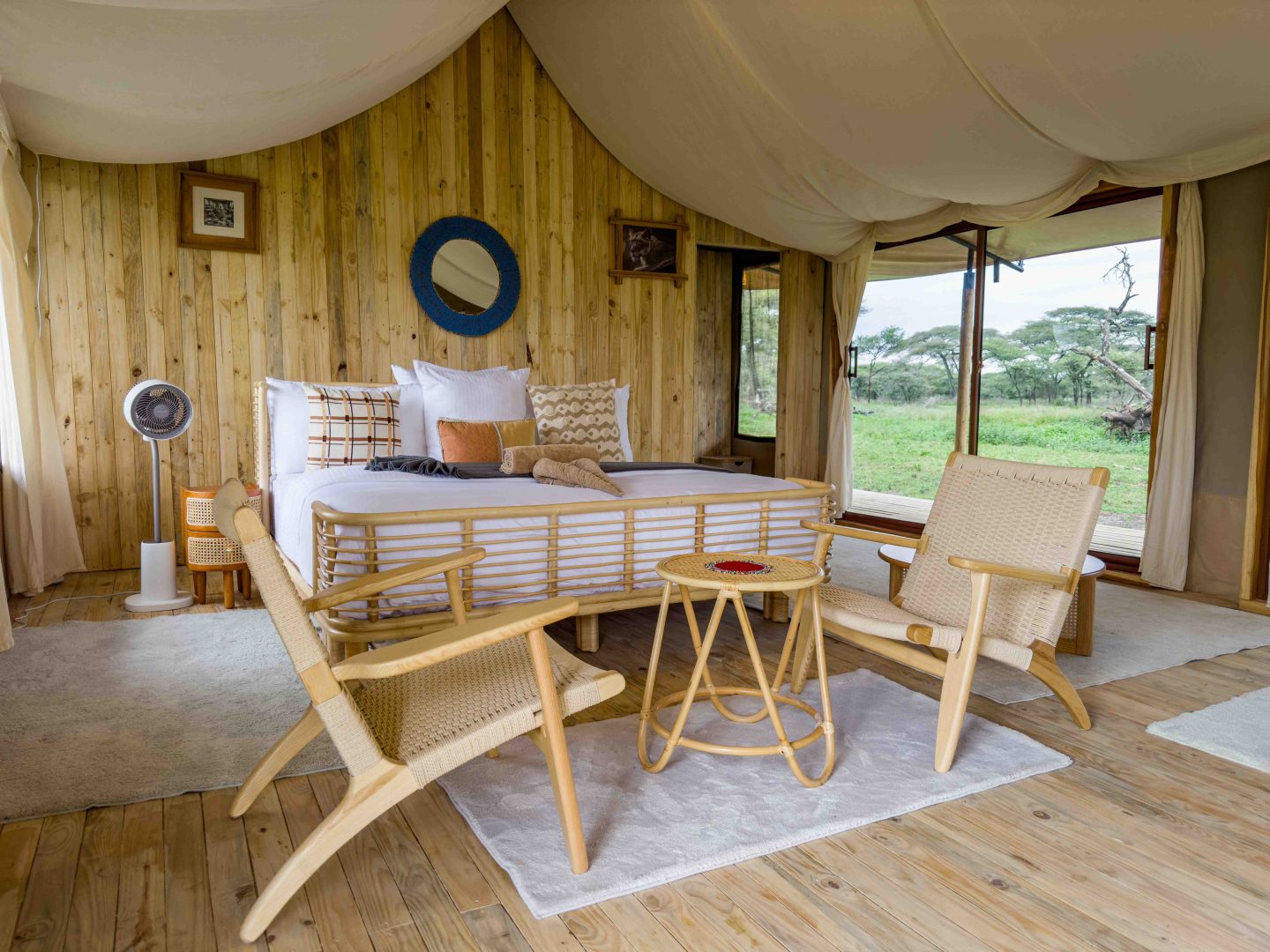
What Does It Cost—and What’s Included?
- $450–$1,000+ per person per night depending on camp tier
- Rates typically include meals, game drives, guides, park fees, and transfers
- All-inclusive—no surprise charges once you’re in camp
Migration camps may cost more than budget lodges, but they offer unmatched value. You’re not just paying for a bed—you’re paying for placement, logistics, and access to some of the most remote wildlife action on earth.
The price generally covers everything once you arrive: full-board meals, guided drives, airstrip transfers, park fees, solar electricity, hot showers, and sometimes even laundry. There’s nothing extra to coordinate or worry about—it’s designed to let you focus on the experience.
What You’re Really Paying For
- Remote logistics: camps are built and rebuilt in wild areas
- Specialized guides with migration expertise
- Strategic placement based on real-time herd tracking
- Small guest-to-guide ratios for a more intimate experience
Behind the curtain, these camps are feats of logistics. Every few months, entire operations—kitchens, tents, solar units, water systems—are dismantled and moved across wild terrain to set up in new locations. It’s a huge undertaking that most guests never see.
Add to that highly experienced guides, who don’t just spot animals but understand migration behavior, predator timing, and the terrain. Fewer guests also means less crowding, more thoughtful guiding, and a front-row experience that feels personal.
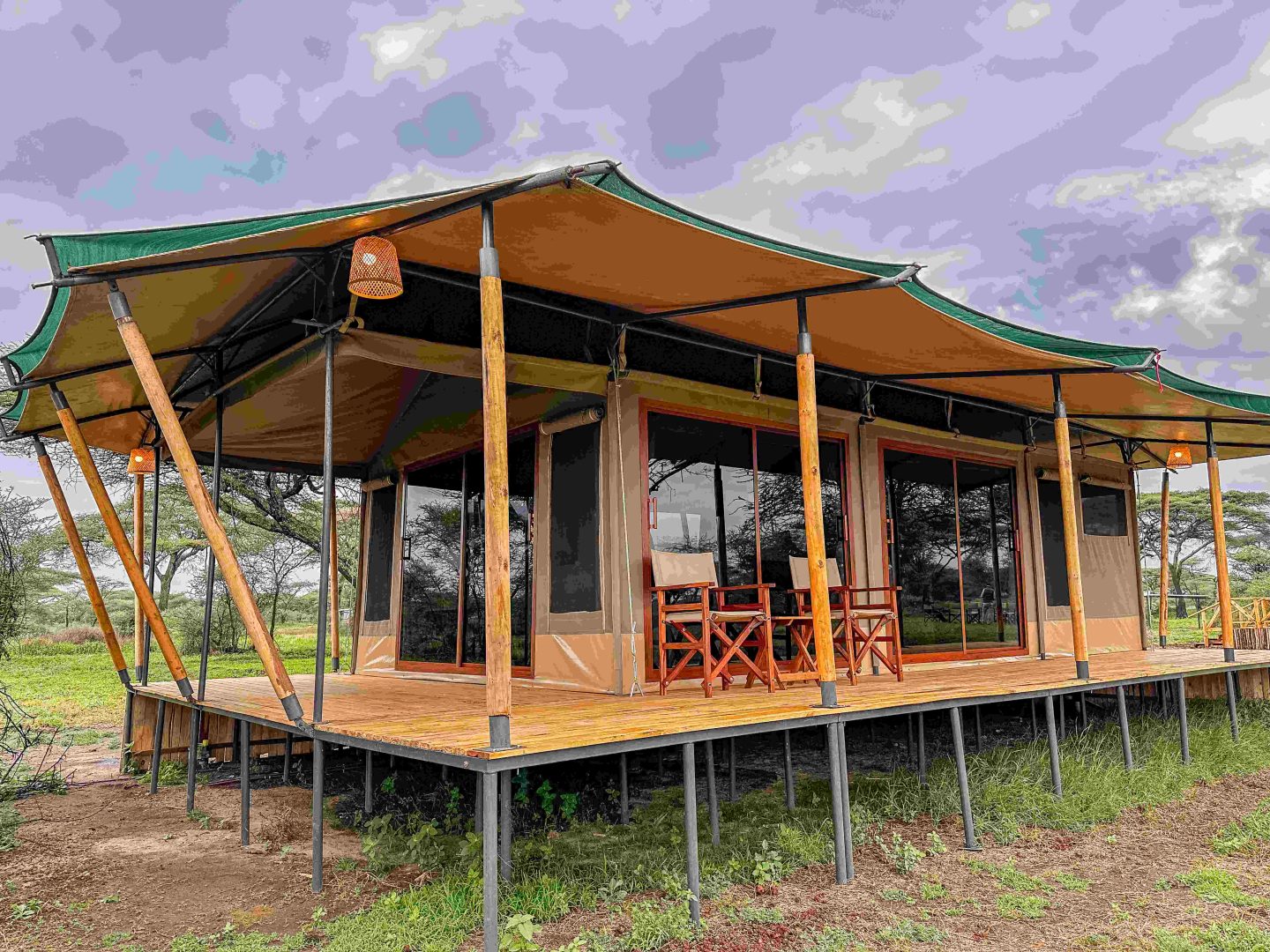
Why Having Your Comfort Move With You Matters
- You don’t have to choose between adventure and comfort
- Camps are luxurious, with hot showers, real beds, and chef-prepared meals
- You stay immersed in nature—without sacrificing rest
Let’s be honest: not everyone dreams of “roughing it.” But that doesn’t mean you can’t have an authentic, immersive experience. Migration camps are designed to bring your comfort with you, so you can enjoy the bush without giving up hot water or a warm bed.
You return from game drives to candlelit dinners and starlit verandas. Your bathroom is private. Your mattress is thick. You hear the wildebeest in the distance, but you sleep deeply. It’s not glamping—it’s the perfect middle ground: nature without the hassle.
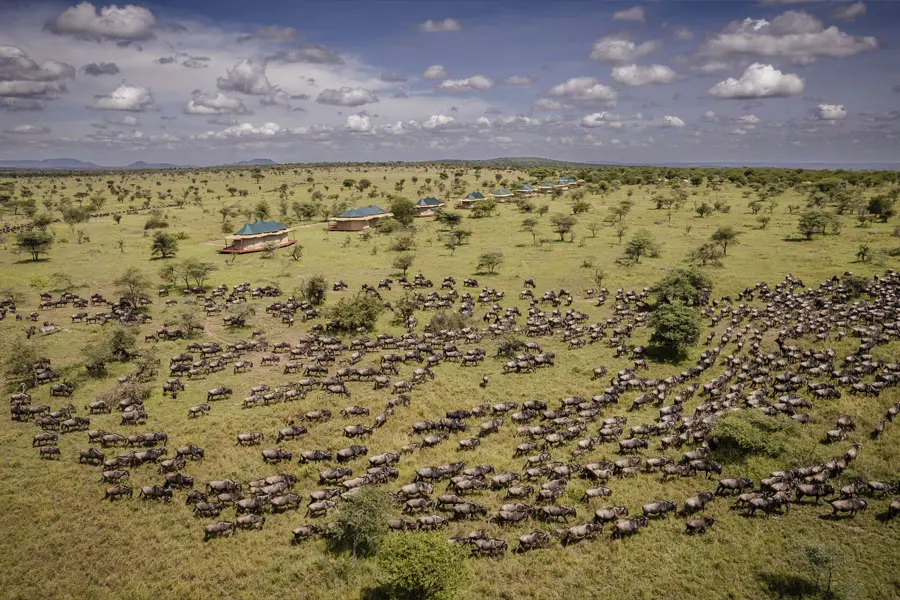
Final Thoughts: Don’t Chase the Migration—Stay With It
The Great Migration is not a show that starts at 9 a.m. It’s wild, unpredictable, and beautiful—but only for those who show up at the right time, in the right place. With mobile camps, you don’t have to chase it. You wake up already there.
Plan early. Move with the herds. Let your comfort follow. And the migration will reward you—not just with sightings, but with moments that will stay with you long after you’ve gone home.

